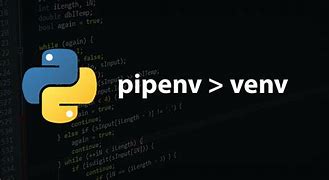How to Create a Virtual Environment for your Flask project using Git Bash
 Joseph Lweya
Joseph Lweya
Creating a virtual environment is a recommended practice in Python development for several reasons:
Isolation: Virtual environments provide isolated environments for each project, which means that dependencies for one project do not interfere with dependencies for another project. This isolation helps to prevent conflicts between different versions of packages that might be required by different projects.
Dependency Management: By using a virtual environment, you can manage project-specific dependencies separately from system-wide Python packages. This allows you to install and update packages specific to your project without affecting other projects or the system as a whole.
Portability: Virtual environments encapsulate all dependencies and configurations required for a project within a specific directory. This makes it easier to share the project with others or deploy it to different environments, as the dependencies are self-contained and do not rely on the system's global Python environment.
Reproducibility: Virtual environments help ensure that your project remains reproducible across different environments. By specifying project dependencies in a
requirements.txtfile and using a virtual environment, you can guarantee that others can recreate the exact same environment with the same dependencies installed.Testing and Development: Virtual environments are particularly useful for testing and development workflows. They allow you to experiment with different packages and configurations within a controlled environment without affecting your system-wide Python setup.
Overall, creating a virtual environment is a best practice in Python development that promotes modularity, flexibility, and reproducibility in project management.
Below are the steps you can follow to create a virtual environment for your Flask project using Git Bash:
Navigate to Your Project Directory: Open Git Bash and navigate to the directory where you pulled the Flask project from GitHub using the
cdcommand. For example:cd path/to/your/projectInstall
virtualenv: If you haven't already installedvirtualenv, you can do so using pip:pip install virtualenvCreate a Virtual Environment: Once
virtualenvis installed, you can create a virtual environment by running:virtualenv venvThis command creates a new directory named
venvin your project directory, which will contain the virtual environment.Activate the Virtual Environment: To activate the virtual environment, run the appropriate activation script based on your operating system:
On Windows:
source venv/Scripts/activateOn macOS and Linux:
source venv/bin/activate
Install Dependencies: With the virtual environment activated, you can now install the project dependencies. Typically, you'll have a
requirements.txtfile listing the dependencies. You can install them using pip:pip install -r requirements.txtVerify Installation: Ensure that all dependencies are installed correctly by checking the output of the
pip freezecommand:pip freezeDeactivate the Virtual Environment: When you're done working on your project, you can deactivate the virtual environment by running:
deactivate
By following these steps, you should have successfully created a virtual environment for your Flask project and installed its dependencies.
Subscribe to my newsletter
Read articles from Joseph Lweya directly inside your inbox. Subscribe to the newsletter, and don't miss out.
Written by

Joseph Lweya
Joseph Lweya
I am a developer trained and mentored by ALX-Africa and building solutions at Datalytika. Always learning, always building.